This knowledge, the workshop does not necessarily understand all of a lifetime.
There is some knowledge that is unpopular in the outside world, but common sense in the workshop. These common senses are hard to find even in books. As an industry person, how can you not understand these things? 1. "One millimeter" is a considerable scale in the machinery industry, even in the entire manufacturing industry. If you see an ad like "accurate to the millimeter" on TV someday, remember to blacken the company. 2. "Automation" is not equal to "robotization". The robots that are used are usually only a small part of the automated pipeline. why? Because it is not necessary. 3. Robots are rarely used directly in machining processes, especially metal cutting. Because the reaction force of the cutting metal can give up the arm of most robots, except for the deburring. 4, chrome (ge) , the general learning of machinery are known to read du'ge, because reading du'luo can not be used in pinyin. But the daily use is still du'luo, because it is to distinguish between chromium and cadmium. 5, quenching (cui) fire , the industry's daily spoken language generally uses "bonfire", because it is to distinguish from "annealing." Once a layman said that I was wrong, I looked at him like this. 6. In the past two years, the artificial intelligence of the second and second seconds, in the actual mass production, most of the time can only deal with the processing of production data. 7, 3D printing (rapid prototyping) is a technology that was actually produced more than 30 years ago and then dug up by some media with ulterior motives. The progress of this technology at this stage is basically dependent on the advancement of materials science. 8, very few machines can be made to work in the same way as the design, this time you need the (xia) field (Ji) (er) test (zheng). 9, this line has been working for a long time. I can really see the length of the bolt in the hand without taking the ruler, and how much wrench is used. 10. “Light†refers to “fine†and “last timeâ€. For example, "knife" means "finishing knife", "light knife" means "the last finishing knife." The scope of "light" can be too wide, "fine grinding", "finishing", "fine car", etc., generally refers to the last time, requiring higher precision. “light activityâ€, finishing the surface of the workpiece to improve its smoothness 11. The name of rough processing in the north and the south is different. The south is called “opening rough†; the northeast is called “raising wasteland†. Quenching (cui) fire must say to dip (zhan) fire The "cui fire" is read as "zhan fire" in order to distinguish it from another reverse process "annealing". In the steel mill workshop, the sound is noisy, it is difficult to distinguish between quenching and annealing. As for why this pronunciation is called, it is actually related to the actual operation of quenching. In fact, it is called "bonfire" when taking hot objects, so some people say that it is changed because of avoiding "crunchy". If you read "cui fire" in business, the other person can immediately conclude that you are a newbie. Baking (bei) is to be read as a companion (pei) "Roasting" refers to a heating process in which iron ore is heated to a temperature 200 to 300 ° C lower than its melting temperature. By such heating, the iron ore undergoes a chemical change in a solid state to improve its metallurgical properties. The word Mandarin is of course (bei), but the factory masters are used to reading (pei) burning, followed by reading. Dioxin (wu) English instead of "dioxin" The Chinese name of the poisonous "Dioxin" should be "two evils [wu fourth sound] English" instead of "dioxin", but in fact, many news reports refer to this substance as "dioxin", of course. Yes, this is not right. Although evil and evil are similar in appearance, the pronunciation is the same, but the meaning is different. The English name of the substance is "Dioxin", where "Di" means "two", "ox" means "oxygen-containing heterocyclic compound", and "in" means that it is "free of nitrogen. Member ring." Dioxins more accurately express the meaning of "Dioxin". Dip (jin) out to be dip (qin) out For example, the blast furnace slag of steel plant is used as raw material, and the rate of iron and aluminum immersion (qin) is studied by acid leaching method and assisted immersion method. In fact, leaching is a commonly used process in wet smelting. Whether it is iron or copper, zinc or gold, the extraction process is generally used by the elderly. Chromium (ge) must be read as Luo (luo) “Chromium†is pronounced as “Loâ€, which is basically spread across all fields, whether it is a factory master, a university teacher, or a steel trader. Any student who studies materials, metallurgy, or metallurgy may have such an experience. At first, I felt that the teacher did not read the "chrome" wrong. Later, after listening to it, it would be no longer enough. It is often chrome. Interact with Loo. Slab (pi) is often read as slab (pei) The pei is a product obtained by casting a molten steel from a steelmaking furnace through a continuous casting machine. It is not a finished product and needs to be rolled to become a steel. Of course, the mainland reads both the slab (pi) and the pei (pei), while Taiwan reads the pei. Rolled (zha) steel should not be read as pressure (ya) steel The “rolling†characters that have not been exposed to the steel industry are often found in the words “rolling (ya) roadâ€, “rolling (ya) system†and “rolling (ya)â€, but once in the metallurgical industry, the word Read (zha), such as common rolls, steel rolling, rolling mills, etc. 1, pick thread, pick: thread 2, the buckle: the wrench thread 3, bonfire: quenching 4, smoldering: tempering 5, tip (sà o): taper, slope, refers to the workpiece one big head and small The average person has read everything into [ shÄo ] 6, Park: the accuracy of the shape is not qualified, such as the board is not flat, the disc is not round, swinging, the coaxiality is not good 7, chrome: pronounced "lo" 8, purple (pronounced shai): the fitter used to smear the surface of the workpiece to facilitate the marking of the pigment. 9, Le knife: because of the deformation of the extrusion, the tool can not be cut, generally multi-finger milling cutter 10, the knife: the tool cracked, broken 11, å´´ (Watt) knife: the tool is inserted into the workpiece to make the workpiece defect 12, pull the wild: rough processing, northeast 13, open rough: rough processing, the South 14. Light: Finishing with the purpose of improving the surface finish, derived from a light knife, light activity 15, light knife: finishing tool, generally refers to the spring polishing knife of the lathe 16, light activity: finishing the surface of the workpiece, so that the smoothness is improved. 17, Le: high-speed finishing with carbide tools, because the cutting is extrusion processing, so called Le, generally speaking, it is just a verb, before and after the appropriate language environment, such as: this It’s light to use the alloy knife. 18, Road: 0.01 mm, Northeast 19. Silk: 0.01 mm, south 20, a: mm, such as 10 mm, said 10, for example: this live has 10 quantities 21, milling: reamer, but it seems to say less 22, wind milling machine: rotating cutter similar to milling cutter installed on wind grinding wheel, fitter 23, curved ruler: square ruler 24, pliers: broad sense of meaning, to see who to say, and the other side to understand, often mistakes when borrowing things. For example, the vise, as long as there are clamps, the fitter does not count 25, wind bag: air pressure capacity, looks a bit like a gas tank 26, the crank: hand cranking are counted, such as hand wheel 27, kg wrench: torque wrench 28, card block: used to put a stack of thin iron plate fastened together, the function is similar to a vise, the shape is like a d word, the vertical is a screw. 29, Park (piao2, pronunciation with the same scoop): the accuracy of the shape and position is not qualified, such as: the board surface is not flat, the disc is not round, the swing is swinging, the coaxiality is not good. 30, shell: chip breaker 31, open shell (qiao4): turning knife grinding chip breaker 32, catching up: focus on a 'catch' word. Hand-eye closed-loop servo, 2-axis linkage, two-step stepping, "human control" machine tool shakes the handwheel with both hands, controls the speed of each slide, and processes more complicated shapes. The general lathe depends on the space and the model. The milling machine relies on the line of the fitter. The master can control the error within 20 channels. The powerful gold miller can even process the two axes. 33. å´´ (Watt) knife: The tool is inserted into the workpiece to make the workpiece defective. ——We can also call it “Zhadao†34. The outer circle: the outer circle of the car. The outer circle of the rough car hair is also called the black skin. 35, end plane: car plane. 36, taper: silk tapping. (different pronunciation) The noun explains "light": verb. Generally refers to "fine" "last time." For example, "light knife" refers to "the knife of the fine car", and "light knife" refers to the "last knife of the fine car." The scope of "light" can be too wide, "fine grinding", "finishing", "fine car", etc., generally refers to the last time, requiring higher precision. What is quenching? The quenching of steel is to heat the steel to a temperature above the critical temperature Ac3 (hypoeutectoid steel) or Ac1 (hyper-eutectoid steel), hold it for a period of time, make it all or part austenitized, and then cool it at a critical cooling rate. A rapid heat treatment process for martensite (or bainite) transformation below Ms (or isothermal near Ms). The solution treatment of materials such as aluminum alloys, copper alloys, titanium alloys, tempered glass, or heat treatment processes with rapid cooling processes is also referred to as quenching. The purpose of quenching: 1) Improve the mechanical properties of metal materials or parts. For example, improve the hardness and wear resistance of tools, bearings, etc., improve the elastic limit of the spring, and improve the comprehensive mechanical properties of the shaft parts. 2) Improve the material properties or chemical properties of certain special steels. Such as improving the corrosion resistance of stainless steel, increasing the permanent magnetity of magnetic steel. When quenching and cooling, in addition to the reasonable selection of quenching medium, there must be a correct quenching method. The commonly used quenching methods mainly include single-liquid quenching, two-liquid quenching, fractional quenching, austempering, and partial quenching. Steel workpieces have the following characteristics after quenching: 1 Unbalanced (ie, unstable) structures such as martensite, bainite, and retained austenite are obtained. 2 There is a large internal stress. 3 Mechanical properties can not meet the requirements. Therefore, steel workpieces are generally tempered after quenching. 2 What is tempering? Tempering is a heat treatment process in which a metal material or a part after quenching is heated to a certain temperature and cooled in a certain manner after being kept for a certain period of time. The tempering is an operation performed immediately after quenching, and is usually the last heat treatment of the workpiece. A process, so the combined process of quenching and tempering is called final treatment. The main purposes of quenching and tempering are: 1) Reducing internal stress and reducing brittleness, quenching parts have great stress and brittleness, and if not tempered in time, deformation or even cracking will occur. 2) Adjust the mechanical properties of the workpiece. After the workpiece is quenched, the hardness is high and the brittleness is large. In order to meet the different performance requirements of various workpieces, it can be adjusted by tempering, hardness, strength, plasticity and toughness. 3) Stabilize the workpiece size. By tempering, the metallographic structure can be stabilized to ensure that no deformation occurs during subsequent use. 4) Improve the cutting performance of certain alloy steels. The role of tempering is: 1 Improve the stability of the structure, so that the workpiece no longer undergoes tissue transformation during use, so that the workpiece geometry and performance are stable. 2 Eliminate internal stresses to improve the performance of the workpiece and stabilize the geometry of the workpiece. 3 Adjust the mechanical properties of steel to meet the requirements of use. The reason why tempering has these effects is because the atomic activity is enhanced when the temperature is raised, and the atoms of iron, carbon and other alloying elements in steel can be diffused faster, realizing the rearrangement and combination of atoms, thereby making the instability The imbalanced organization has gradually transformed into a stable and balanced organization. The elimination of internal stress is also related to the decrease in metal strength at elevated temperatures. In general, when steel is tempered, the hardness and strength are lowered, and the plasticity is improved. The higher the tempering temperature, the greater the change in these mechanical properties. Some alloy steels with a high content of alloying elements will precipitate some fine metal compounds when tempered in a certain temperature range, which will increase the strength and hardness. This phenomenon is called secondary hardening. Tempering requirements: Different workpieces should be tempered at different temperatures to meet the requirements of use. 1 Tools, bearings, carburized and quenched parts, and surface hardened parts are usually tempered at a low temperature below 250 °C. After low temperature tempering, the hardness changes little, the internal stress decreases, and the toughness is slightly improved. 2 The spring is tempered at 350-500 ° C at medium temperature to obtain high elasticity and necessary toughness. 3 Parts made of medium carbon structural steel are usually tempered at a high temperature of 500 to 600 ° C to obtain a good fit of strength and toughness. When steel is tempered at around 300 °C, its brittleness is often increased. This phenomenon is called the first type of temper brittleness. Generally should not temper in this temperature range. Some medium carbon alloy structural steels tend to become brittle if they are slowly cooled to room temperature after tempering at high temperatures. This phenomenon is called the second type of temper brittleness. The addition of molybdenum to steel or cooling in oil or water during tempering prevents the second type of temper brittleness. This brittleness can be eliminated by reheating the second type of tempered brittle steel to the original tempering temperature. In production, often based on the requirements of the performance of the workpiece. According to the heating temperature, the tempering is divided into low temperature tempering, medium temperature tempering, and high temperature tempering. The heat treatment process combined with quenching and subsequent high temperature tempering is called quenching and tempering, that is, it has high strength and good plastic toughness. 1. Low temperature tempering: 150-250 ° C, M back, reduce internal stress and brittleness, improve plastic toughness, and have high hardness and wear resistance. Used in the production of measuring tools, tools and rolling bearings. 2, medium temperature tempering: 350-500 ° C, T back, has a high elasticity, a certain degree of plasticity and hardness. Used to make springs, forging dies, etc. 3, high temperature tempering: 500-650 ° C, S back, with good comprehensive mechanical properties. Used to make gears, crankshafts, etc. 3 What is a normal fire? Normalizing is a heat treatment that improves the toughness of steel. After heating the steel member to 30-50 °C above the Ac3 temperature, the steel is cooled for a while. The main feature is that the cooling rate is faster than annealing and lower than quenching. During normalizing, the crystal grains of the steel can be refined in a slightly faster cooling, which not only can obtain satisfactory strength, but also can significantly improve the toughness (AKV value) and reduce The tendency of the member to crack. - After low-alloy hot-rolled steel sheets, low-alloy steel forgings and castings are normalized, the comprehensive mechanical properties of the material can be greatly improved, and the cutting performance is also improved. Normalizing has the following purposes and uses: 1 For the sub-eutectic steel, normalizing is used to eliminate the superheated coarse-grained structure and Wei's structure of the cast, forged and welded parts, the banded structure in the rolled material, the grain refinement, and the pre-heat treatment before quenching. 2 For hypereutectoid steel, normalizing can eliminate the reticulated secondary cementite and refine the pearlite, which not only improves the mechanical properties, but also facilitates the subsequent spheroidizing annealing. 3 For low carbon deep-drawn thin steel sheets, normalizing can eliminate free cementite at grain boundaries to improve its deep drawing properties. 4 For low-carbon steel and low-carbon low-alloy steel, normalized, more fine-grained pearlite structure can be obtained, so that the hardness is increased to HB140-190, avoiding the "sticking knife" phenomenon during cutting and improving the machinability. . For medium carbon steel, it is more economical and convenient to use normalizing fire in the case where both normalizing and annealing can be used. 5 For ordinary medium carbon structural steel, in the case where the mechanical properties are not high, normalizing can be used instead of quenching and high temperature tempering, which is not only easy to operate, but also makes the steel structure and size stable. 6 High-temperature normalizing (Ac-3 or more 150 to 200 °C) Due to the high diffusion rate at high temperatures, the composition segregation of castings and forgings can be reduced. The coarse grains after high temperature normalizing can be refined by a second lower temperature normalizing. 7 For some low and medium carbon alloy steels used in steam turbines and boilers, normalizing to obtain bainite structure, and then tempering at high temperature, it has good creep resistance at 400-550 °C. 8 In addition to steel and steel, normalizing is also widely used in the heat treatment of ductile iron to obtain a pearlite matrix and improve the strength of ductile iron. Since normalizing is characterized by air cooling, ambient air temperature, stacking mode, airflow, and workpiece size all have an impact on the organization and performance after normalizing. Normalizing tissue can also be used as a classification method for alloy steel. Usually, according to a sample having a diameter of 25 mm heated to 900 ° C, the obtained structure is air-cooled into pearlitic steel, bainitic steel, martensitic steel and austenitic steel. 4 What is annealing? Annealing is a metal heat treatment process in which the metal is slowly heated to a certain temperature for a sufficient period of time and then cooled at a suitable rate. Annealing heat treatment is divided into complete annealing, incomplete annealing and stress relief annealing. The mechanical properties of the annealed material can be tested by tensile testing or by hardness testing. Many steels are supplied in an annealed heat treatment state. The hardness test of steel can be tested by Rockwell hardness tester. For thinner steel plates, steel strips and thin-walled steel pipes, surface Rockwell hardness tester can be used to test HRT hardness. . The purpose of annealing is to: 1 Improve or eliminate various structural defects and residual stresses caused by steel during casting, forging, rolling and welding, and prevent deformation and cracking of workpieces. 2 Soften the workpiece for cutting. 3 Refine the grains and improve the structure to improve the mechanical properties of the workpiece. 4 Prepare the organization for the final heat treatment (quenching, tempering). Common annealing processes are: 1 Fully annealed. It is used to refine the coarse superheated structure of medium and low carbon steel which has poor mechanical properties after casting, forging and welding. The workpiece is heated to a temperature of 30 to 50 ° C above the temperature at which all of the ferrite is transformed into austenite, and is kept for a period of time, and then slowly cooled with the furnace, and the austenite is again transformed during the cooling process, so that the microstructure of the steel is thinned. . 2 spheroidizing annealing. It is used to reduce the high hardness of tool steel and bearing steel after forging. The workpiece is heated to a temperature of 20 to 40 ° C above the temperature at which the steel begins to form austenite, and is slowly cooled after the heat preservation. During the cooling process, the lamellar cementite in the pearlite becomes spherical, thereby lowering the hardness. 3 isothermal annealing. It is used to reduce the high hardness of certain alloy structural steels with high nickel and chromium content for cutting. Generally, it is cooled to the most unstable temperature of austenite at a relatively rapid rate, and the austenite is transformed into torsite or sorbite at a suitable temperature for a suitable period of time, and the hardness can be lowered. 4 Recrystallization annealing. It is used to eliminate the hardening phenomenon (hardness increase, plasticity drop) of metal wire and sheet during cold drawing and cold rolling. The heating temperature is generally 50 to 150 ° C below the temperature at which the steel begins to form austenite. Only in this way can the work hardening effect be eliminated and the metal softened. 5 Graphitization annealing. It is used to make cast iron containing a large amount of cementite into a malleable cast iron with good plasticity. The process operation is to heat the casting to about 950 ° C, and after proper cooling for a certain period of time, the cementite is decomposed to form a group of flocculent graphite. 6 diffusion annealing. It is used to homogenize the chemical composition of alloy castings and improve their performance. The method is to heat the casting to the highest possible temperature without melting, and to keep the steel for a long time, and the various elements in the alloy tend to be uniformly distributed and then slowly cooled. 7 Stress relief annealing. Used to eliminate internal stresses in steel castings and weldments. After the steel product is heated, the austenite is formed at a temperature of 100 to 200 ° C below, and after cooling, it is cooled in the air to eliminate the internal stress. AGV rack is a new type of automated rack, composed of an AGV car and a traditional rack. It is part of modern intelligent warehouses. Through AGV unmanned transport vehicles, automated transportation and sorting functions within the warehouse can be achieved, achieving high automation in the entire process of warehousing, loading and unloading, handling, stacking, picking, packaging, distribution, and shipping, thereby improving logistics turnover efficiency, ensuring the timeliness and accuracy of logistics supply, and achieving flexible warehousing functions. AGV rack is a low-cost automated Storage Rack, which has the characteristics of simple structure, low price, convenient use, good quality, and quick effectiveness. Reduce and eliminate unnecessary steps in the production process, reduce unnecessary job settings, and ensure traceability of product quality. Improved the efficiency of goods storage and classification. AGV shelves solve the five major problems of traditional shelves: sorting, displacement, secondary sorting, re inspection of packaging, and sorting according to flow direction. In traditional shelf warehouses, the circulation of goods is usually done manually, with a huge workload, and AGV shelves precisely solve this problem. AGV Rack,Metro Shelving,Storage Shelves,Movable Storage Shelves Suzhou Aomeijia Metalic Products Co,Ltd. , https://www.amjshelf.com
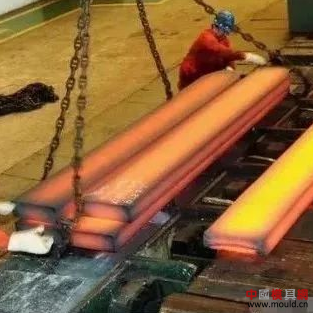
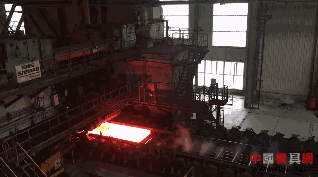

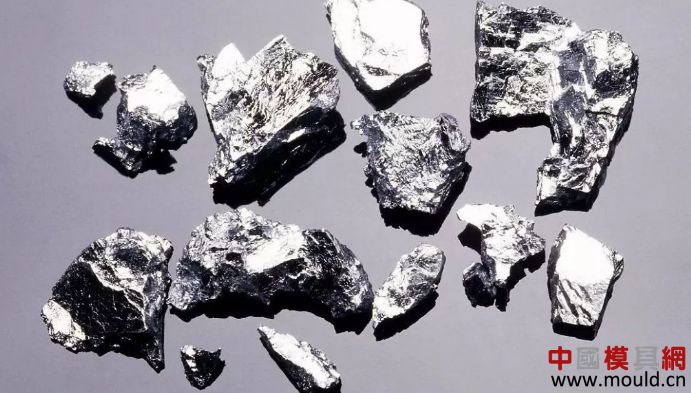


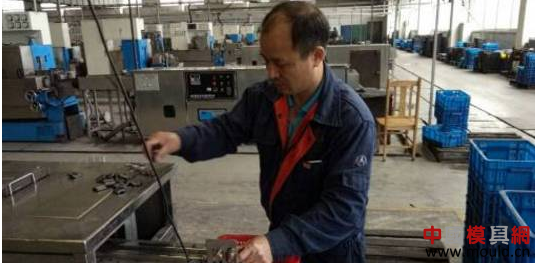

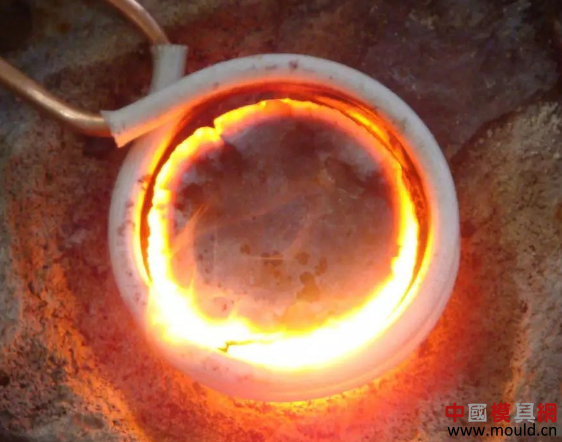
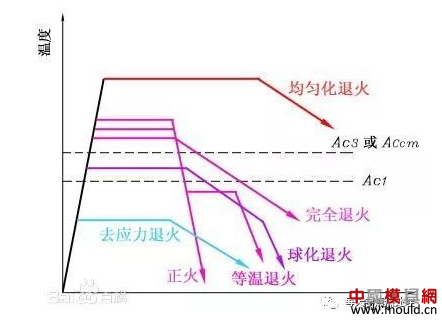
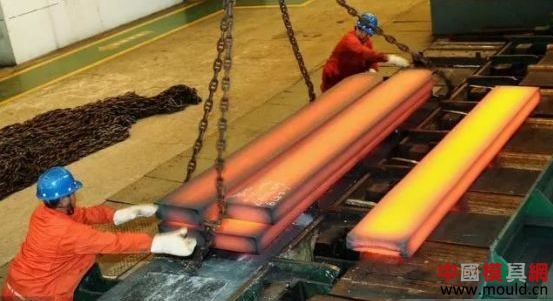
The benefits of applying AGV shelves: improving productivity: allowing managers to concentrate labor resources on value-added tasks and products, while repetitive tasks are handled by AGV; Reduce product damage: The installed sensors and load protection devices allow AGV to accurately and safely handle all loads; Reduce labor costs: By replacing employees with AGVs, fewer employees can be used for operations; Improve efficiency: Seamless integration with production, ERP, and WMS software, enabling accurate on time material flow; Improving safety: The AGV car is equipped with sensors for obstacle detection, which can predict road conditions, avoid obstacles, and ensure the safety of goods.
